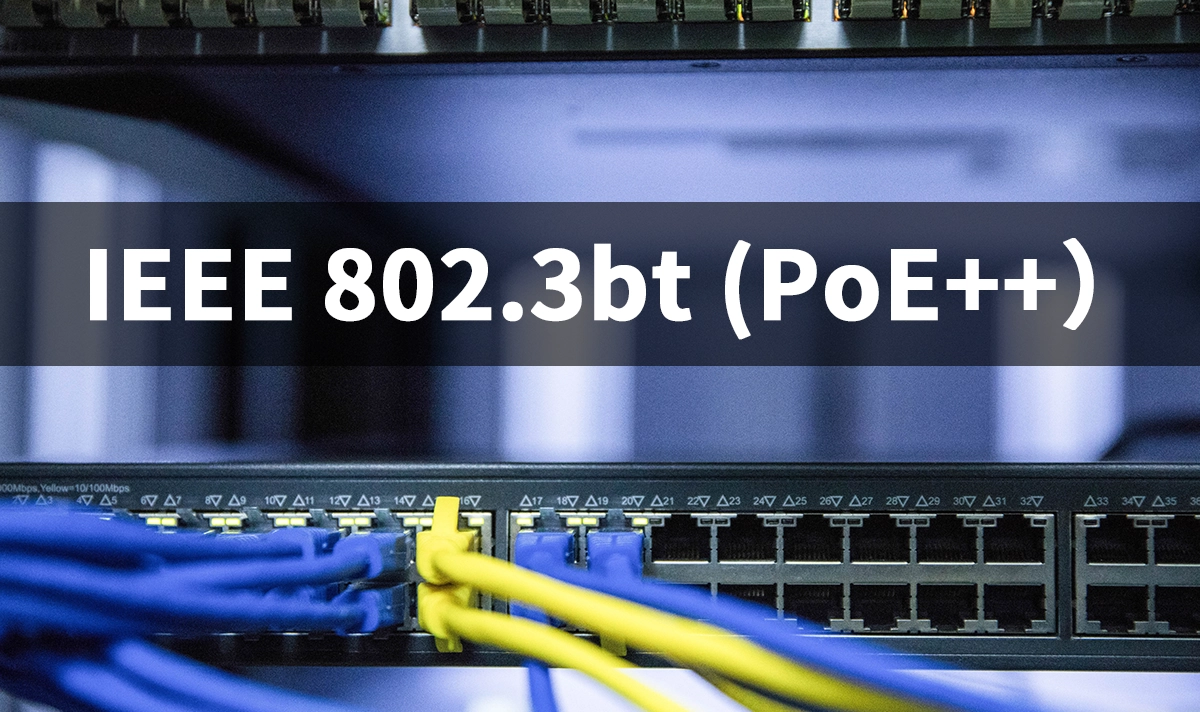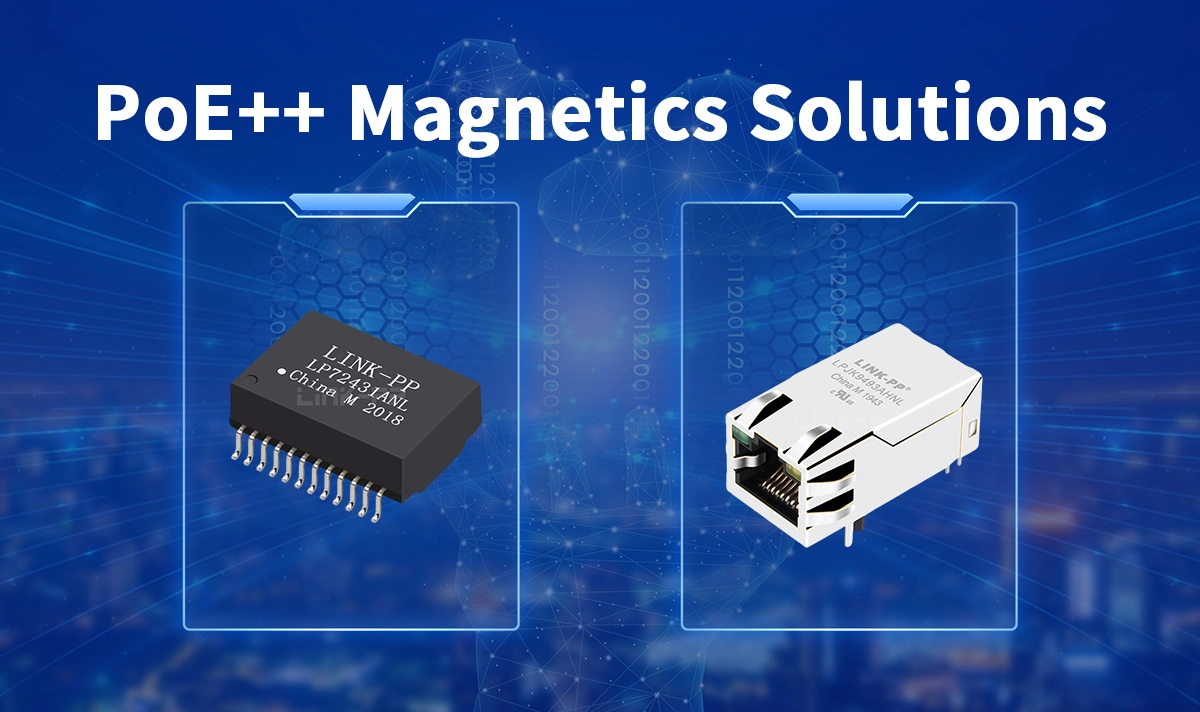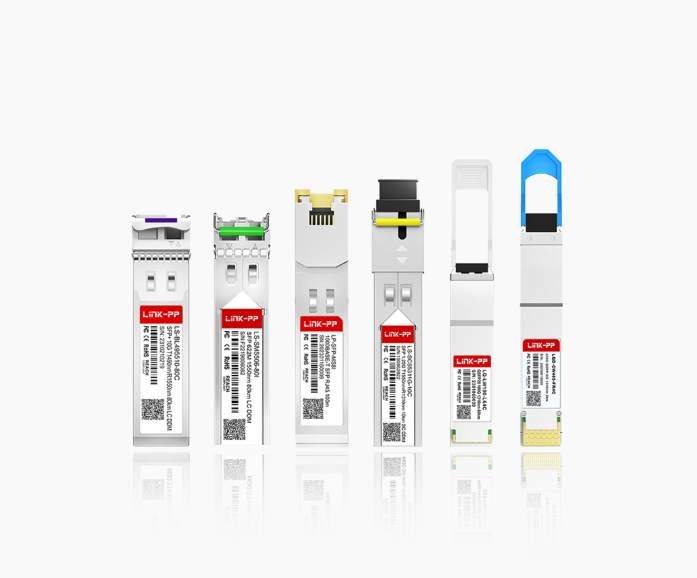
➡️ Introduction: The Evolution of PoE
The IEEE 802.3bt standard, often called PoE++ or 4-Pair PoE, represents the latest evolution in Power over Ethernet (PoE) technology. Officially ratified in September 2018, IEEE 802.3bt expands the power capability of Ethernet connections to meet the growing demands of high-performance devices such as 4K PTZ cameras, Wi-Fi 6/6E access points, and thin clients.
By enabling up to 100 watts of power delivery over standard twisted-pair Ethernet cabling, IEEE 802.3bt has become a cornerstone for next-generation enterprise, industrial, and IoT networks.
➡️ Power Classes and Types Defined by IEEE 802.3bt
The 802.3bt standard introduces two new power types—Type 3 and Type 4—that significantly extend the capabilities of earlier PoE (802.3af) and PoE+ (802.3at) systems.
Standard | Common Name | Power Source (PSE) | Device Power (PD) | Cable Pairs Used |
|---|---|---|---|---|
PoE | 15.4 W | 12.95 W | 2 pairs | |
PoE+ | 30 W | 25.5 W | 2 pairs | |
IEEE 802.3bt Type 3 | PoE++ | 60 W | 51 W | 4 pairs |
IEEE 802.3bt Type 4 | High-Power PoE++ | 100 W | 71–90 W | 4 pairs |
Key Enhancements
4-pair power delivery: Uses all four twisted pairs for both data and power transmission.
Increased power efficiency: Reduces power loss across long cables.
Backward compatibility: Fully compatible with IEEE 802.3af and 802.3at standards.
Improved classification system: Supports up to eight power classes for more granular control.
➡️ Technical Features of IEEE 802.3bt
Power Management:
Dynamic power allocation enables PSEs to manage available power intelligently, optimizing energy use across multiple devices.Cable Requirements:
Supports Cat5e, Cat6, or higher Ethernet cables, with all four pairs active for power transmission.Voltage Range:
Operates between 50V and 57V DC, maintaining safety and compatibility across various environments.Thermal Considerations:
Enhanced efficiency minimizes heating in bundled cables, supporting high-density installations.
➡️ Applications of IEEE 802.3bt (PoE++)
The higher power capacity of IEEE 802.3bt enables an expanded range of connected devices, including:
High-end PTZ and 4K/8K IP Cameras
Wi-Fi 6 / 6E / 7 Access Points
Video conferencing systems
Interactive digital signage and kiosks
Industrial automation controllers
Mini PCs and thin clients
LED lighting systems
PoE++ reduces the need for separate AC wiring, simplifying deployment in smart buildings, surveillance networks, and industrial IoT systems.
➡️ IEEE 802.3bt vs. Previous PoE Standards
Feature | IEEE 802.3bt (PoE++) | ||
|---|---|---|---|
Year Introduced | 2003 | 2009 | 2018 |
Max PSE Power | 15.4 W | 30 W | 60–100 W |
Max PD Power | 12.95 W | 25.5 W | 51–90 W |
Pairs Used | 2 | 2 | 4 |
Typical Devices | IP phones, APs | HD cameras | Wi-Fi 6 APs, Displays, PCs |
With IEEE 802.3bt, PoE technology has matured from powering small IP phones to energizing full computing devices, enabling a unified network and power architecture.
➡️ LINK-PP High-Power PoE++ Magnetics Solutions

To support IEEE 802.3bt’s demanding electrical and thermal requirements, LINK-PP provides high-performance magnetics specifically designed for PoE++ applications.
🔹 PoE++ LAN Transformer :
The LP72431ANL is a single-port 10GBase-T PoE++ LAN Magnetic (SMD type) that supports up to 100 W PoE power delivery with one 10Base-T channel and 1.0A DC balanced current per port.🔹 PoE++ RJ45 Magnetics Jack:
Ideal for IEEE 802.3at and 802.3bt designs, offering robust power delivery and compact board integration for switches, cameras, and routers.
With LINK-PP magnetics, network engineers can ensure reliable power transfer, enhanced thermal stability, and compliance with IEEE 802.3bt specifications—critical for next-generation Ethernet devices.
➡️ Conclusion
The IEEE 802.3bt (PoE++) standard has transformed Power over Ethernet from a convenience feature into a powerful infrastructure technology capable of delivering up to 100 watts of power safely and efficiently.
By combining 4-pair power transmission, intelligent power management, and broad device compatibility, PoE++ simplifies network architecture and lowers deployment costs across enterprise, industrial, and IoT systems.
To unlock the full potential of IEEE 802.3bt, use LINK-PP’s PoE++ Magnetics Modules — designed to deliver performance, safety, and reliability across high-power Ethernet networks.
👉 Explore LINK-PP’s full range of PoE magnetics components at www.l-p.com.
➡️ FAQ about IEEE 802.3bt (PoE++)
1. What is IEEE 802.3bt (PoE++)?
IEEE 802.3bt, also known as PoE++ or 4-Pair PoE, is the latest Power over Ethernet standard that delivers up to 100 watts of power over standard Ethernet cables. It extends previous standards—802.3af (PoE) and 802.3at (PoE+)—by using all four twisted pairs for both data and power transmission, making it suitable for high-power network devices.
2. What are the differences between Type 3 and Type 4 PoE++?
The IEEE 802.3bt standard defines two power levels:
Type | Power Source (PSE) | Device Power (PD) | Typical Applications |
|---|---|---|---|
Type 3 | 60 W | 51 W | Wi-Fi 6 APs, PTZ Cameras, Thin Clients |
Type 4 | 100 W | 71–90 W | LED Displays, Industrial PCs, POS Terminals |
Type 3 and Type 4 both use 4-pair transmission, but Type 4 doubles the current per pair to deliver up to 100W safely and efficiently.
3. Is PoE++ backward compatible with PoE and PoE+ devices?
Yes. IEEE 802.3bt maintains full backward compatibility with previous PoE standards. A PoE++ switch or injector can safely power PoE+ (802.3at) and PoE (802.3af) devices, automatically negotiating the correct voltage and current.
However, older PoE or PoE+ switches cannot power PoE++ (Type 3/4) devices due to lower wattage limits.
4. What type of Ethernet cables are recommended for IEEE 802.3bt?
To handle the higher current and minimize power loss, Cat5e or higher Ethernet cables are required.
For long runs or dense cable bundles, Cat6 or Cat6A cables are recommended, as they have lower resistance and better heat dissipation, ensuring stable power delivery up to 100 meters (328 feet).
5. What devices can benefit from IEEE 802.3bt (PoE++)?
PoE++ enables power delivery to a wide range of high-consumption devices, including:
Wi-Fi 6 / Wi-Fi 7 Access Points
4K/8K IP Cameras with PTZ and IR
Digital Signage Displays and Touch Kiosks
Industrial IoT Controllers and Sensors
Point-of-Sale (POS) Terminals
Mini PCs, NUCs, and Thin Clients
Smart LED Lighting Systems
These applications benefit from centralized power management and reduced cabling complexity.
6. Is PoE++ safe for existing network infrastructure?
Yes. The IEEE 802.3bt standard includes built-in detection and classification mechanisms to verify whether connected devices support PoE before power is applied.
It also employs current balancing and thermal management to ensure cable and connector safety, even under high load conditions.
7. What is the maximum power and voltage used by IEEE 802.3bt?
Maximum PSE output: 100 W
Typical PD available power: 71–90 W
Operating voltage range: 50–57 V DC
This efficiency allows PoE++ to power devices that were previously impossible to run solely through Ethernet connections.
8. Can PoE++ power standard laptops or monitors?
Yes — Type 4 (100W) PoE++ can power devices such as mini PCs, industrial tablets, or thin monitors, depending on power efficiency and adapter support. However, most consumer laptops still require USB-C Power Delivery (PD) rather than Ethernet-based PoE.
9. What are the benefits of adopting IEEE 802.3bt PoE++ in enterprise networks?
Simplified infrastructure — One cable for data and power.
Lower installation cost — No need for AC outlets near each device.
Centralized power control — Managed from PoE switches.
Energy efficiency — Intelligent power allocation reduces waste.
Scalability — Future-ready for high-power network devices.




